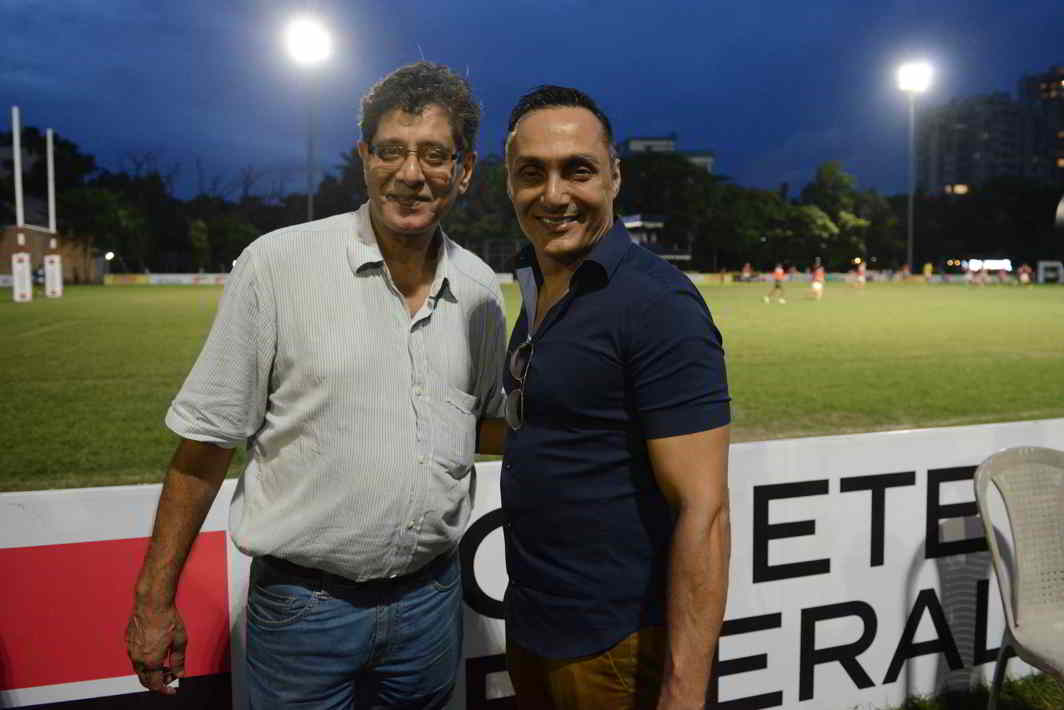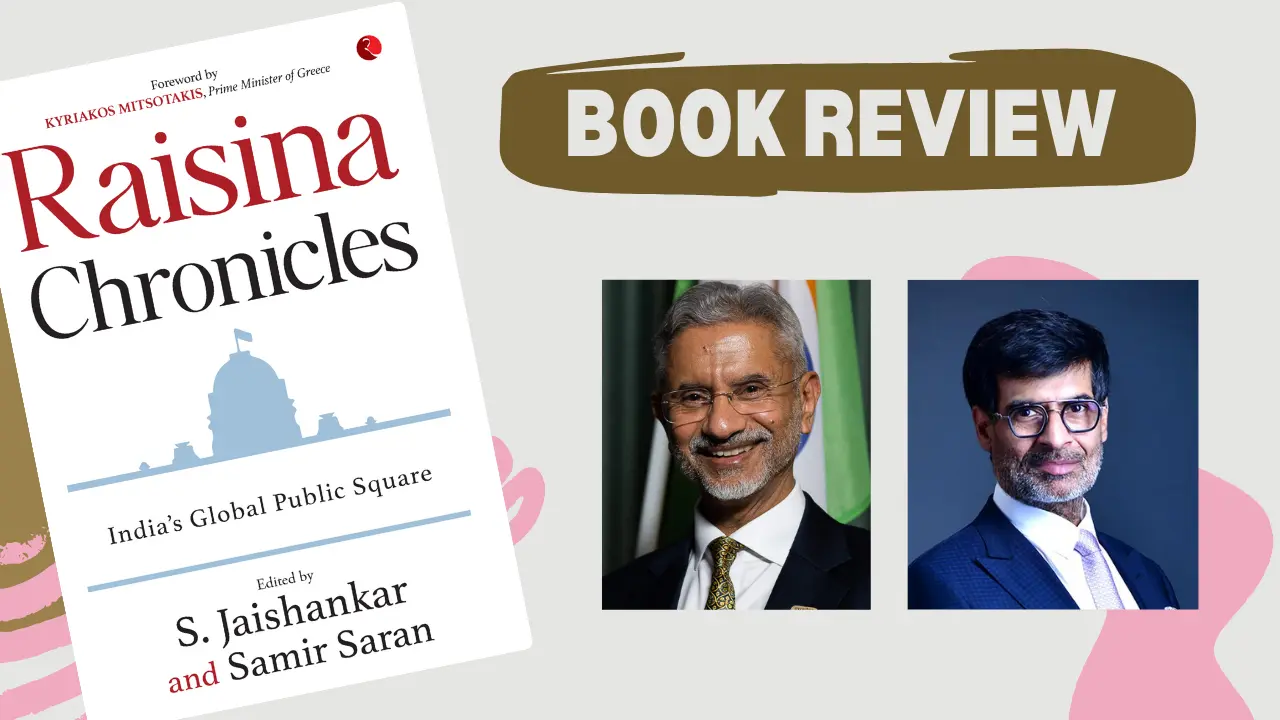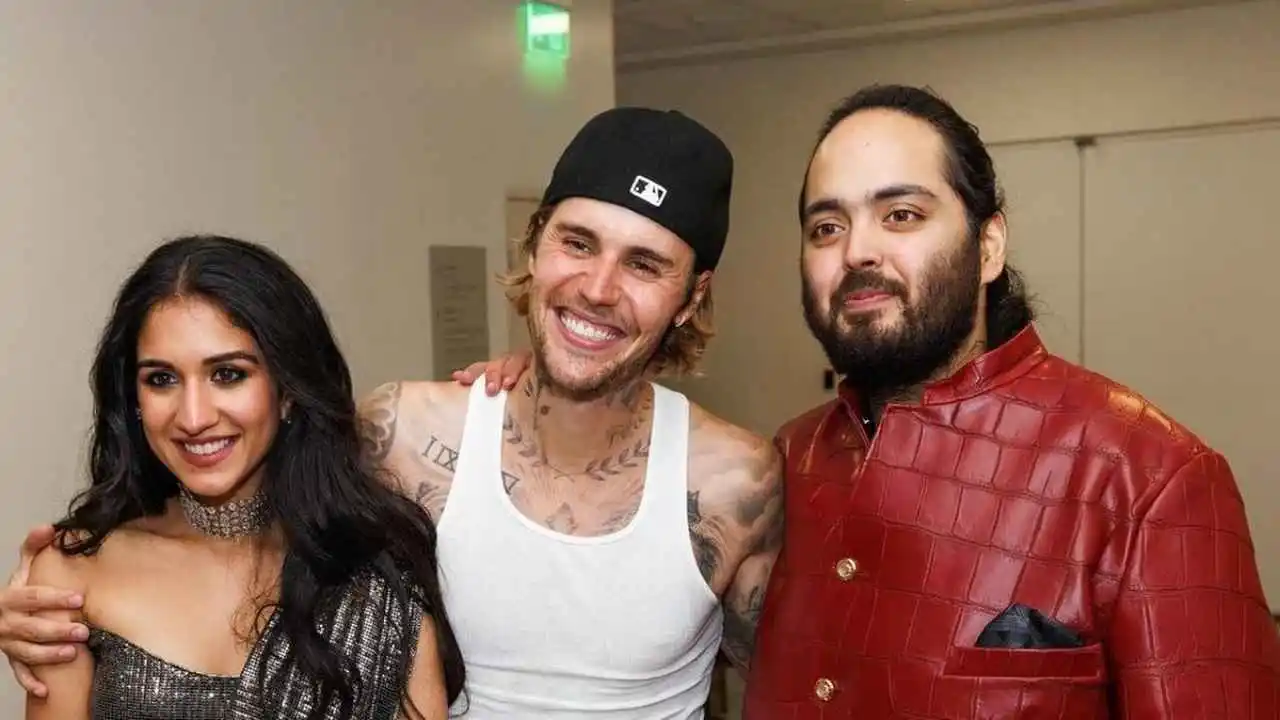[vc_row][vc_column][vc_column_text]The versatile RAHUL BOSE feels that the stories of India’s new rugby girls resonate with the incredible journey of Poorna Malavath, the second youngest person to scale Everest. In a freewheeling interview with SUJIT BHAR, he explains his reasons
Rahul Bose isn’t one of your regular, humdrum heroes that stalk Bollywood. He is short, he has a bald patch that he doesn’t much care about really, he is a sportsperson – he has played international level rugby for India for 11 long years – and he does those off-beat movies that are dismissed in Bollywood as art-movies. Well, Bose is a hatke character, you see, a hatke hero.
Yes, he wears really good Ray Bans and mouth-wateringly elegant Jimmy Choos, and shirts that are pretty much Bollywood-ish, but I have seen him in casual Tees, and in jerseys, muddied up and scraggy. Rugby isn’t for the faint-hearted, or for Bollywood anyway.
So he makes this movie about a real life hero, Poorna, who has climbed the highest mountain in the world, Everest, and she did it with sheer optimism and a prayer in her heart, punched with oodles of determination. Somewhere, I thought, Bose found synergy. That was the start.
I met Bose at the Calcutta Football and Rugby Club (CC&FC) to talk about rugby, when the film Poorna came up. He was visibly excited. But before we delve into the interview, let us get some statistics straight. Malavath Purna, our heroine, became the youngest female ever to climb Everest, when she stood on the top of the world on May 25, 2014. But she missed becoming the youngest person to ever have climbed Everest, by, believe it or not, 20 days! Four years before Poorna, almost to the day (May 22, 2010), American Jordan Romero had become the youngest person when he climbed Everest with his father at 13 years 10 months and 10 days.
So who cares? What Bose looked at was not just the final feat – which was in itself stupendous – but at the entire road leading to that. No American can ever match that for sure.
Back to Bose and the interview. While talking about rugby in India, and the increasing presence of women, especially tribal women, in the somewhat rough sport, Bose digressed. “I can compare this with my heroine in my film Poorna,” he said. “In them (the adivasi women rugby players) I see Poorna’s resolve… Coming from a place where leave alone mountains, even hills are difficult o come by, and to go all the way to Everest and climb it, becoming the youngest female ever in history to climb the highest peak…”
Bose is not one who talks about his film first. He talks about the person who made this film possible, his real life heroine. “It is an astonishing tale, even Bollywood probably could not have written it. Poorna was 13 when she climbed Everest. Can you believe it? This film takes you from her small hut in Telangana to Bhongir Fort outside Hyderabad, to Darjeeling and Sikkim, to Nepal, and then to the top of Everest. We have, unarguably, some of the best footage from the summit of Everest you’ve ever seen. I won’t reveal how we did it.”
So it was, that Bose was looking for a real life hero, and he got the best. He finds resonance in the tribal girls playing rugby. “I can compare… I have written and directed the film, and I have acted in it. Just a tribal girl, quite like my rugby heroines, but the level of her determination is astounding. No hurdle is a hurdle for her.”

A still from the movie
So what drew you to Poorna?
“You see, to be poor is one setback. To be a girl is another. Then to be an adivasi is a third challenge. A 13-year-old adivasi girl might have been able to climb Everest if she were from the Northeast and grown up in a gritty, mountainous region. But Telangana is as flat as my forehead, you see. Poorna is astonishing, single-minded and determined. She thought of only two things when she reached the summit – “Sir”, her mentor, RS Praveen Kumar, and all the tribal girls who could now hope to reach great heights. In the film, she is being played by Aditi Inamdar, also from Telangana.”
It is a sort of rule of thumb for Bose, who is always scouring the countryside for new talent for rugby. Go to the base, there you will find gritty life. Mountaineering needs as much discipline and grit. “These are the types of girls and boys we look for in the interiors of our villages and amid adivasis. Those who have no fear of the unknown and those who have lived in poverty long enough to realise that there is so much more out there… And if you could show them how to dream, you just can’t stop them.”
The way Bose promoted the movie was also unique. “The first thing I did was approach schools to screen it for all students. These will be paid, but can be paid at subsidised rates. That will carry the message much further and, more importantly, to the right people, the young ones. That is where I need the message to go.”
He did that, and the initial response was amazing: over 200 schools readily agreed and then more schools came in. Before it reached the theatres, it was already a rage among the youngsters. That was what Bose wanted to achieve. “If more youngsters are empowered by this, if more come to sports, and to difficult sports like mountaineering, then it will be good for the young of the country,” he concluded.[/vc_column_text][/vc_column][/vc_row]


 India News10 hours ago
India News10 hours ago
 India News12 hours ago
India News12 hours ago
 Entertainment8 hours ago
Entertainment8 hours ago
 India News14 hours ago
India News14 hours ago
 India News14 hours ago
India News14 hours ago
 India News8 hours ago
India News8 hours ago
 Latest world news7 hours ago
Latest world news7 hours ago
 India News8 hours ago
India News8 hours ago







